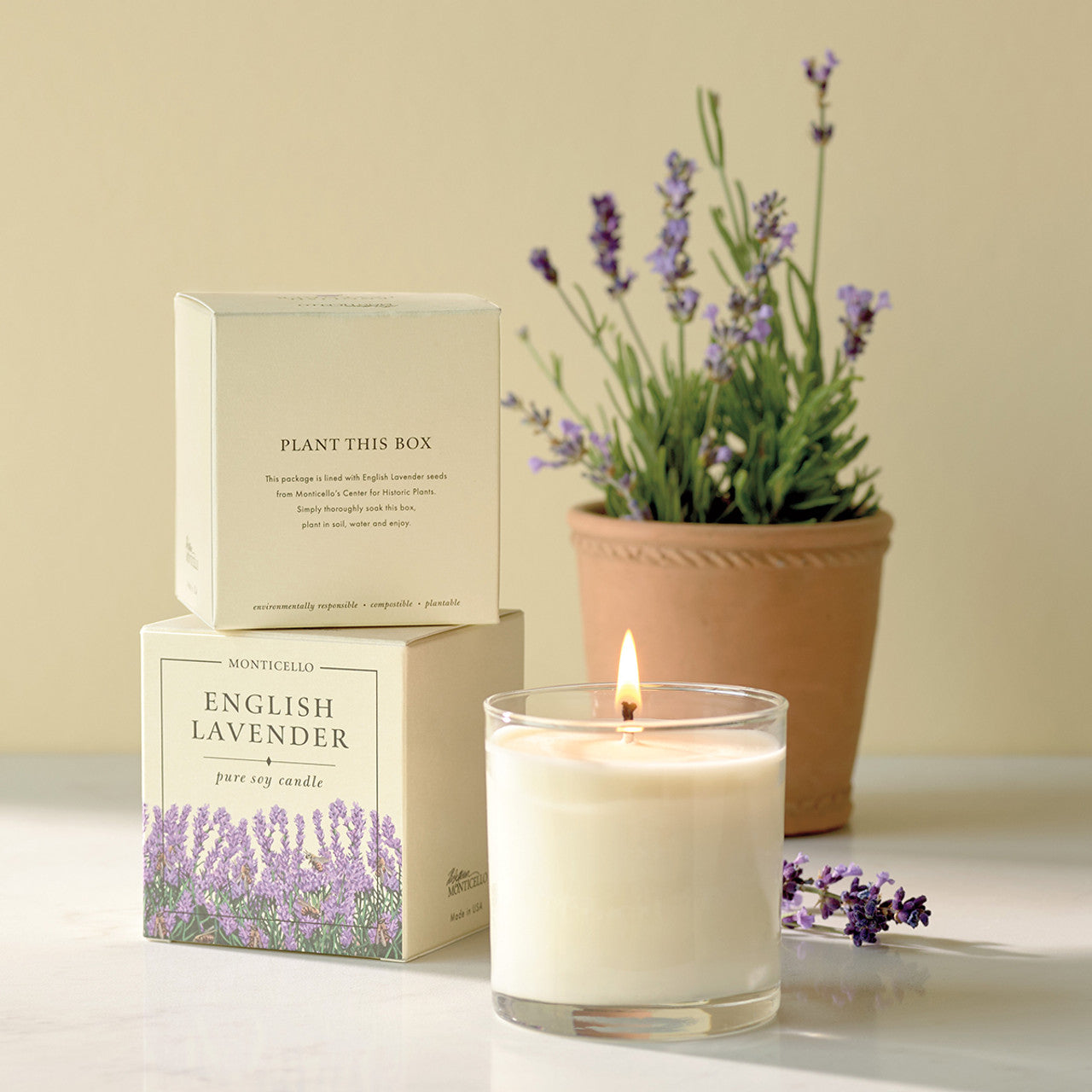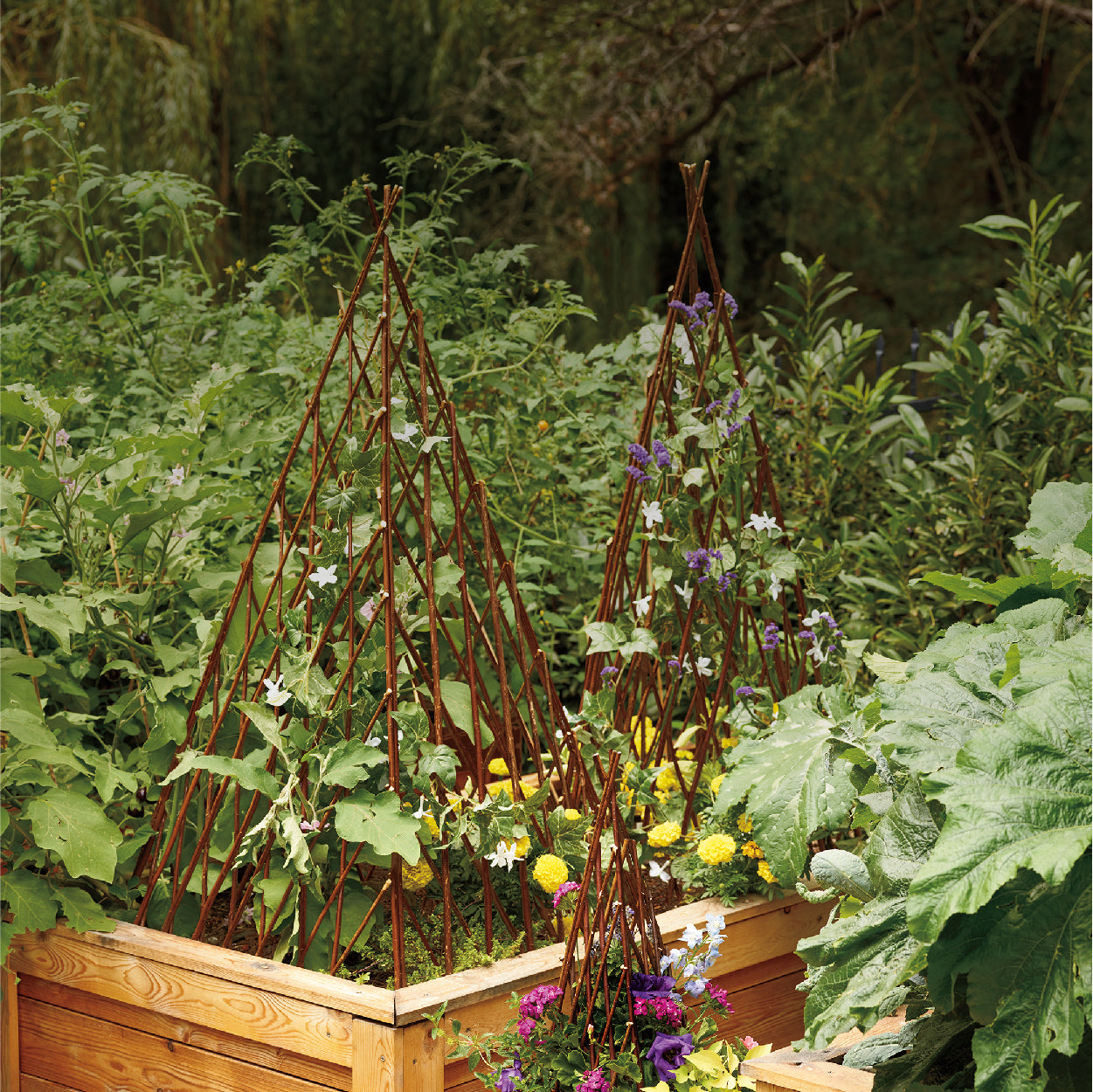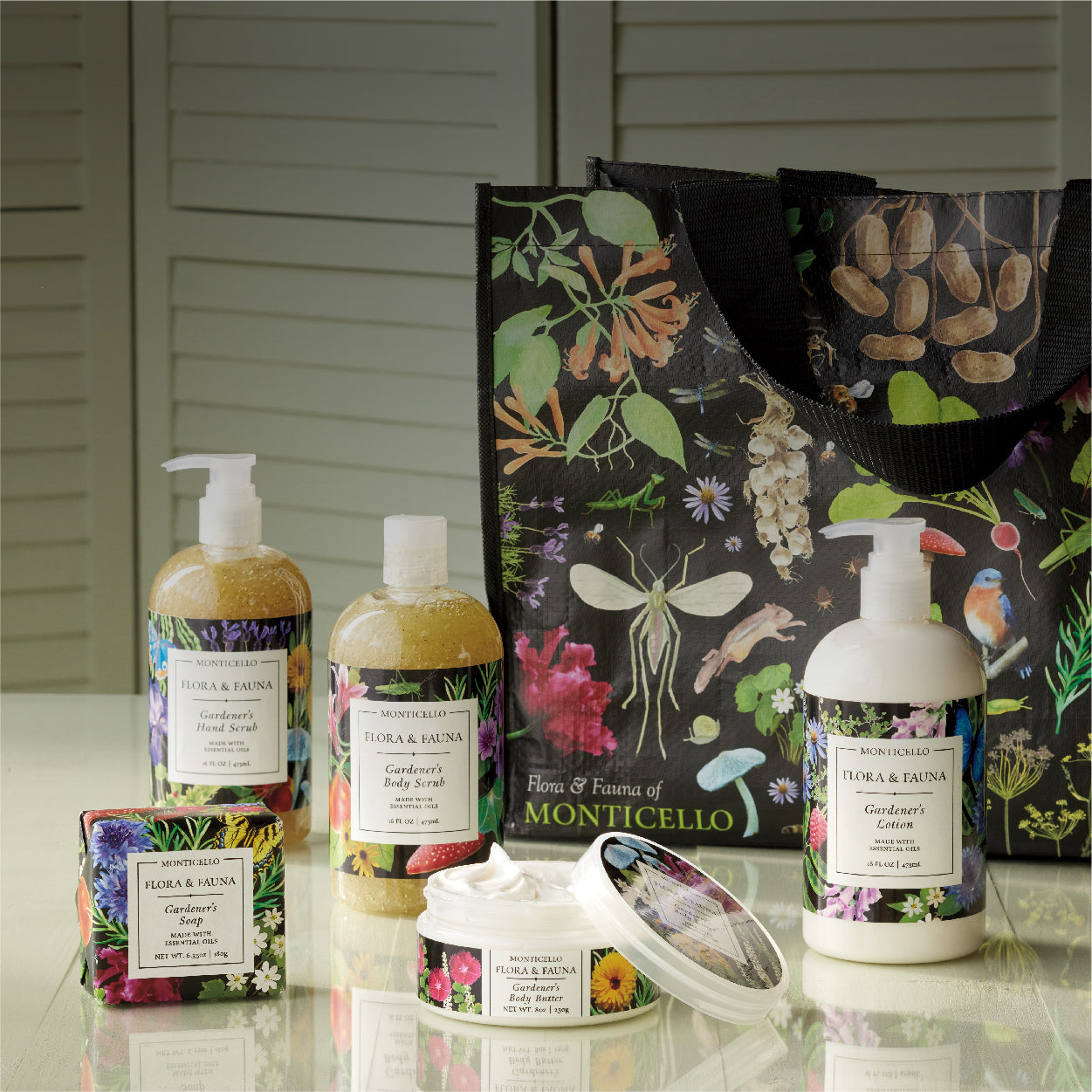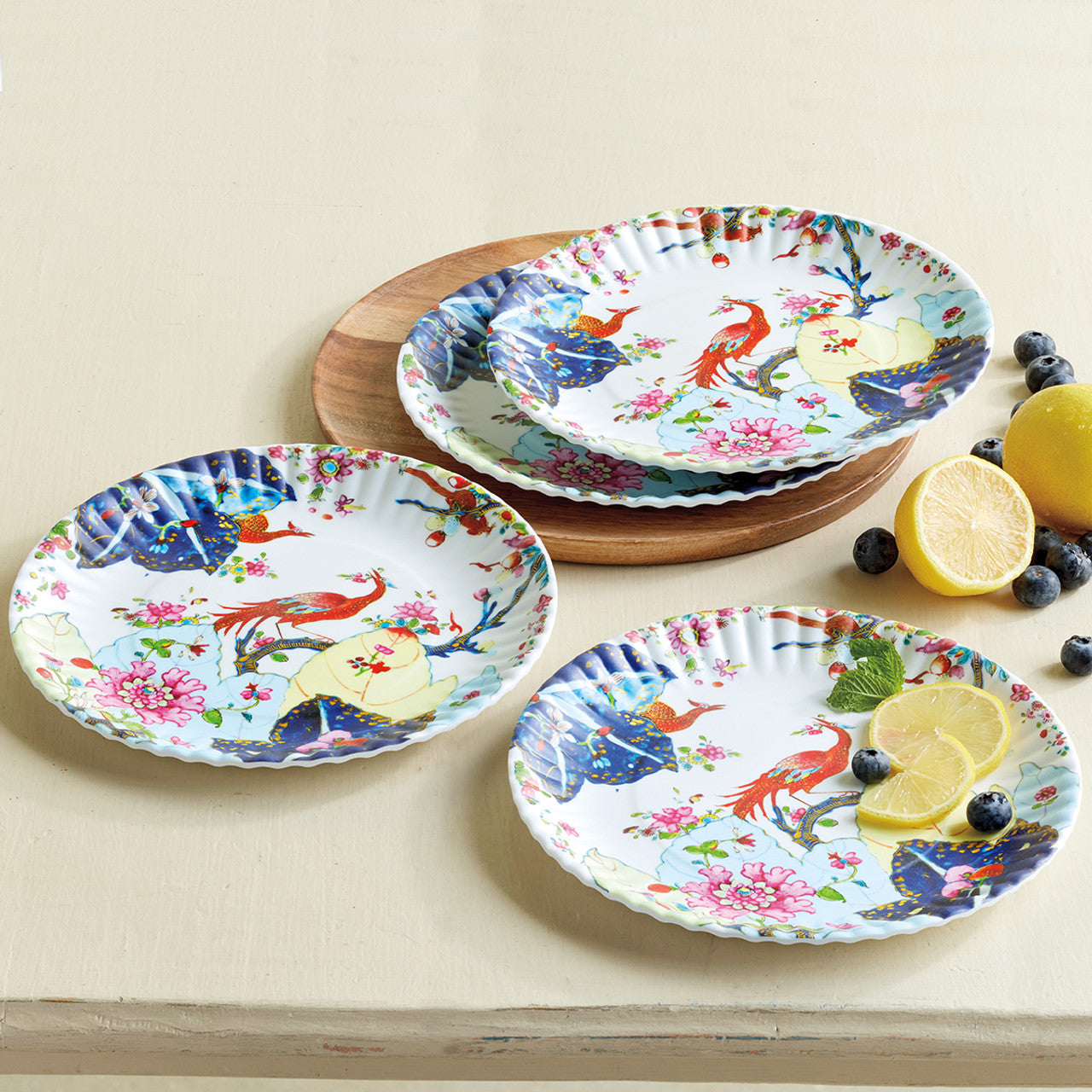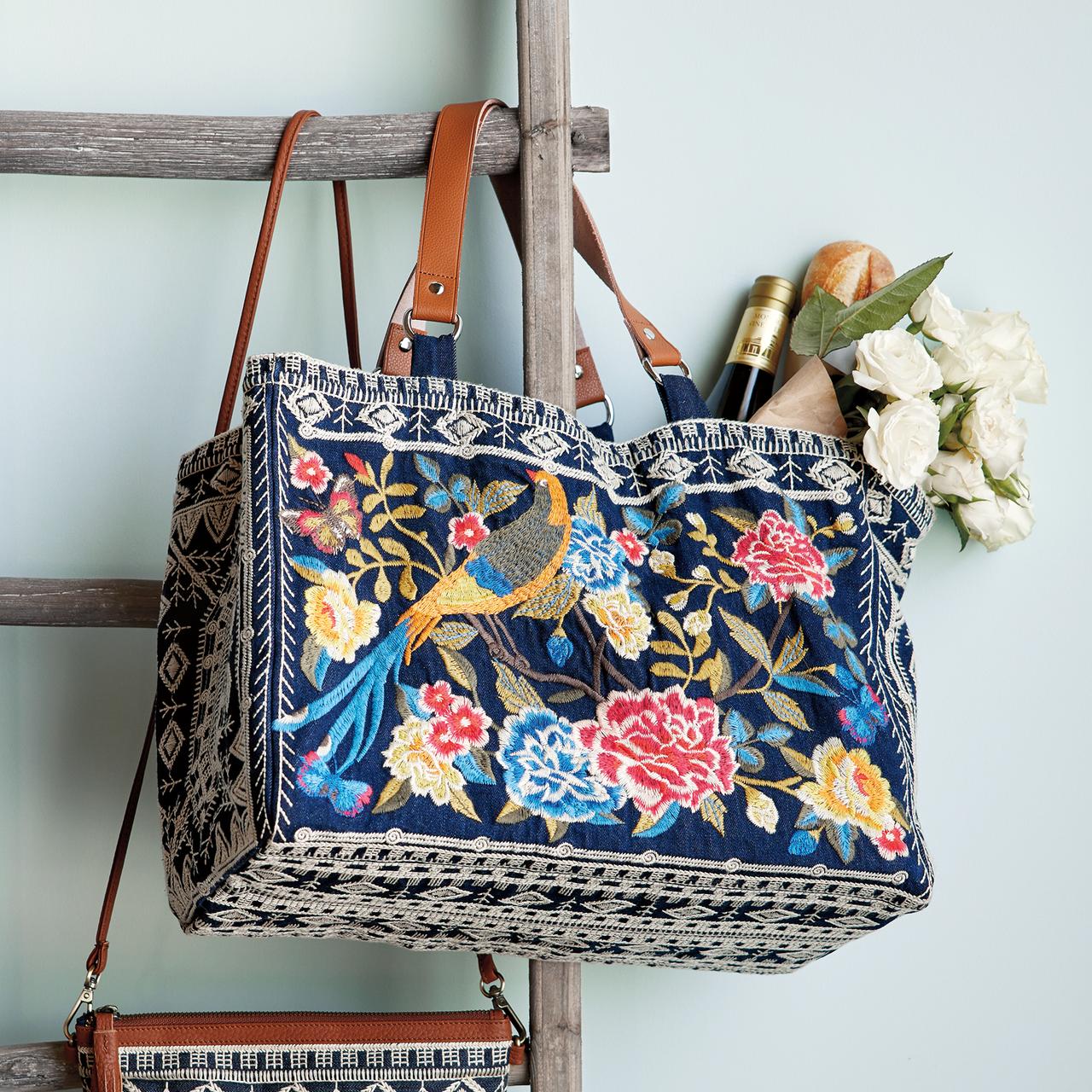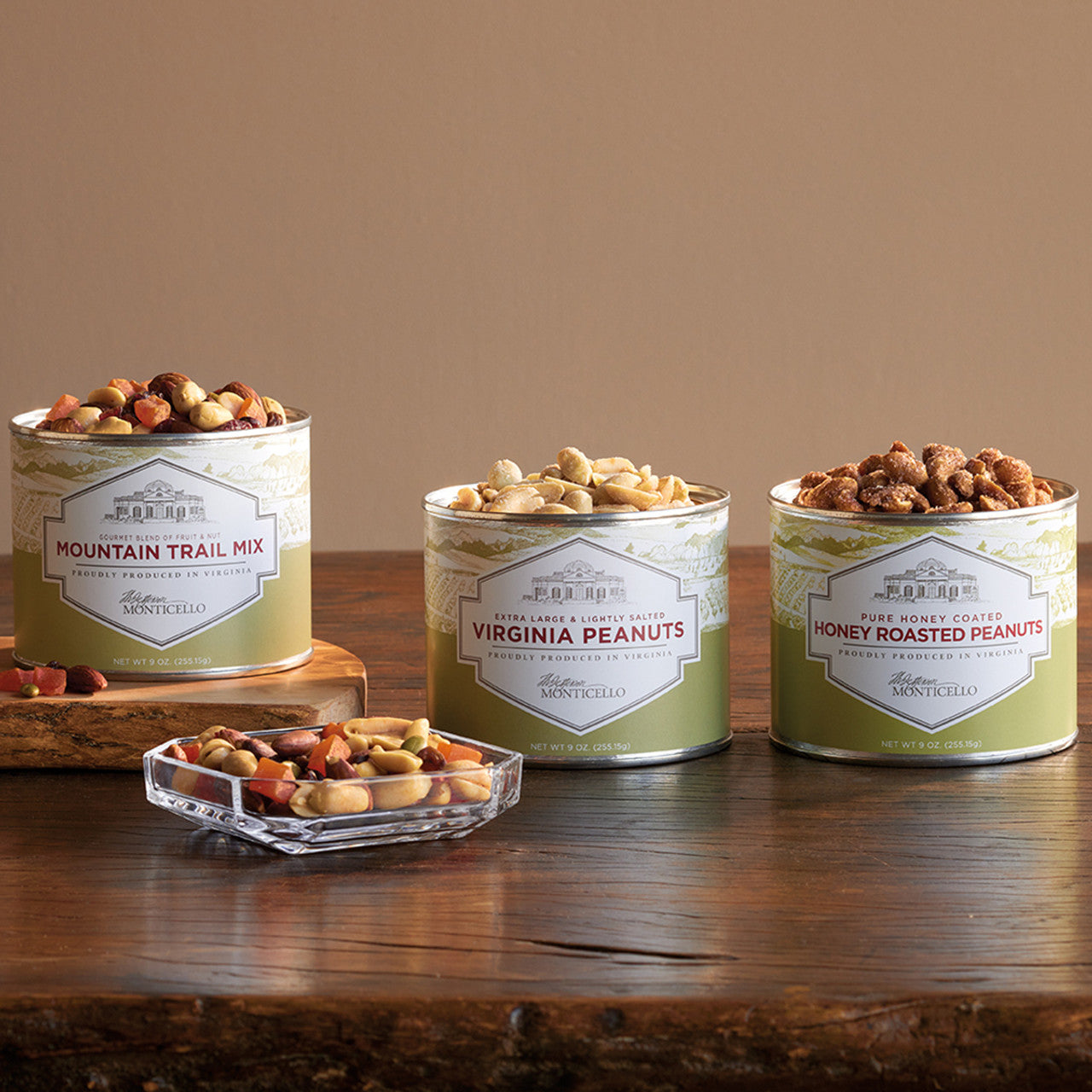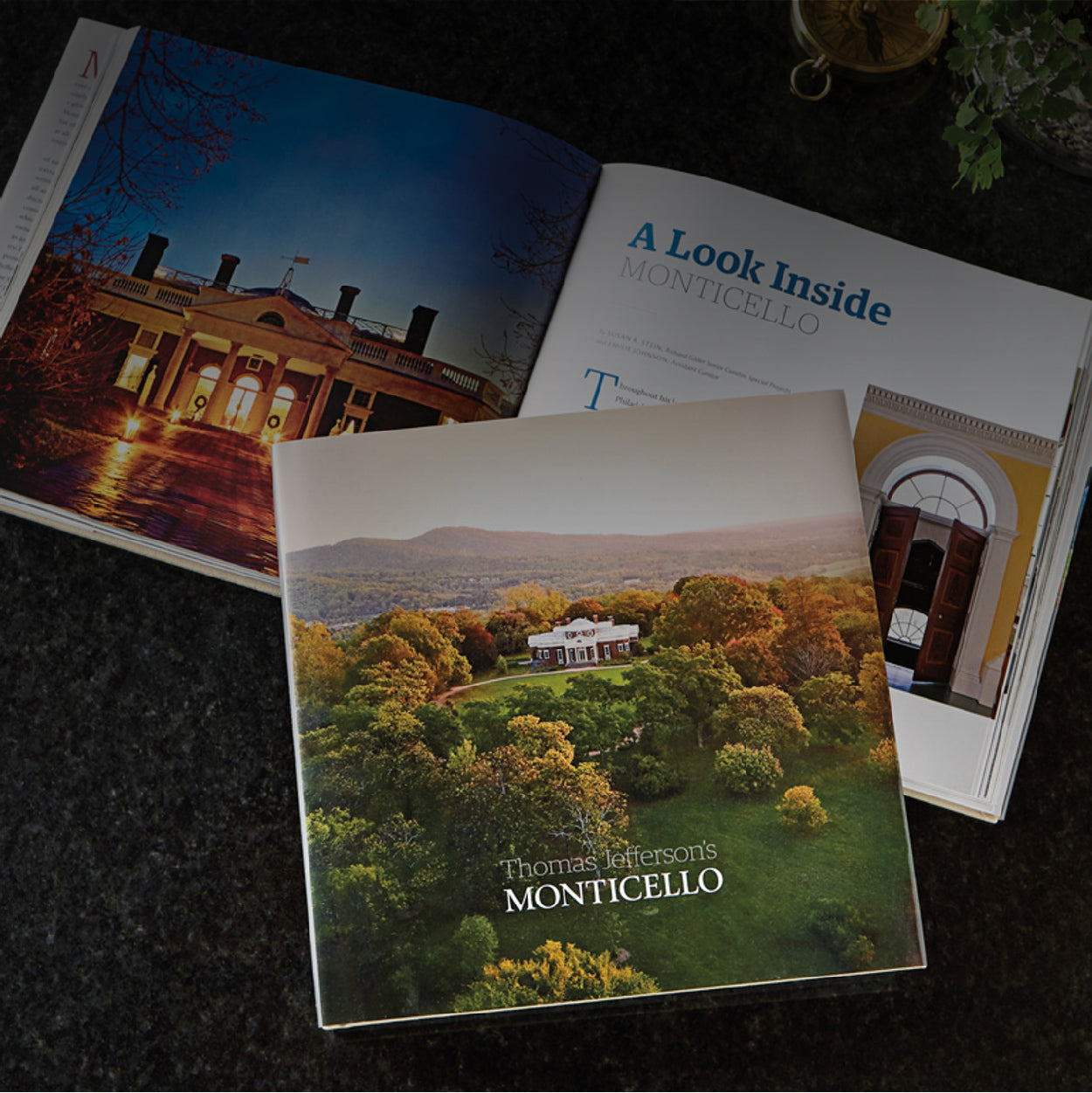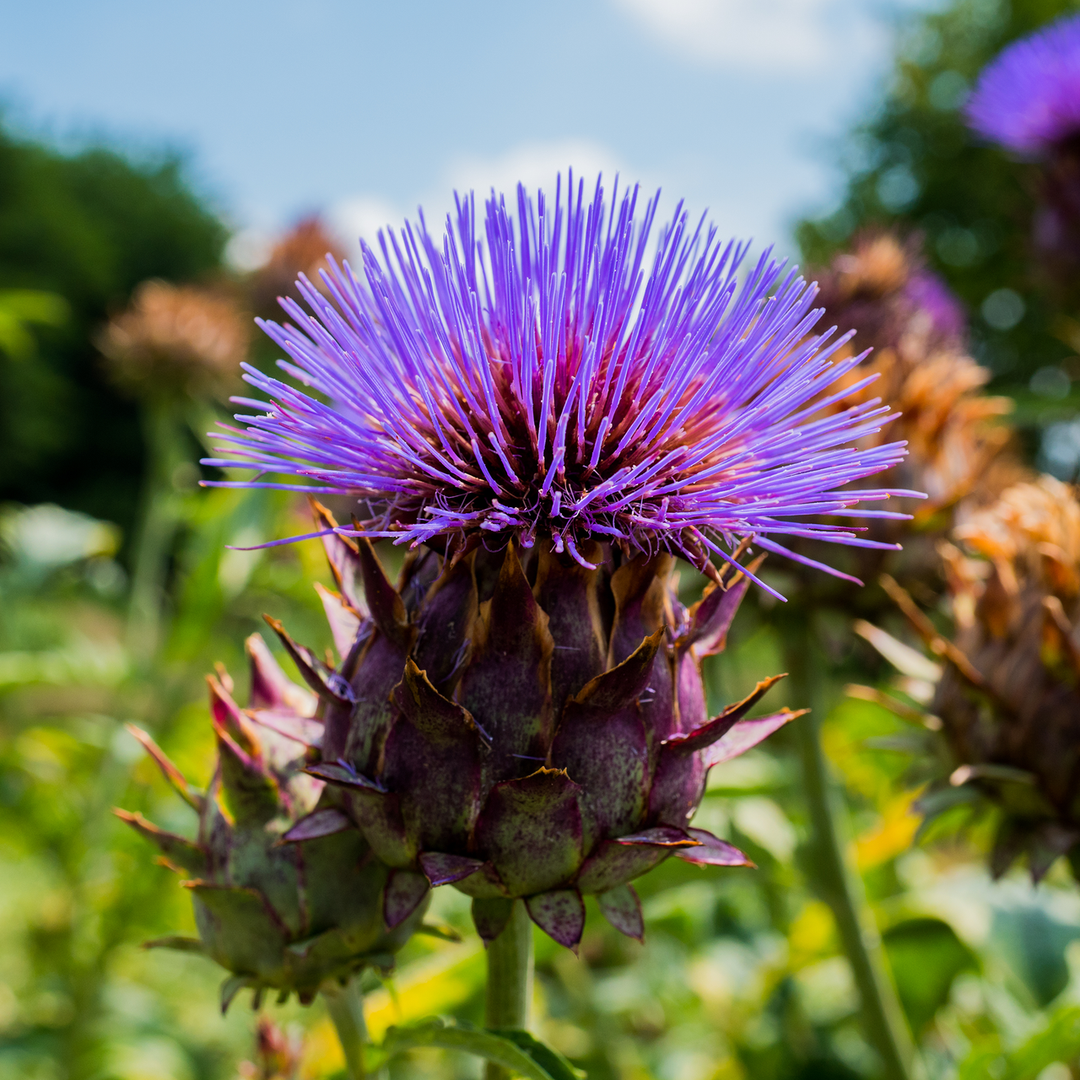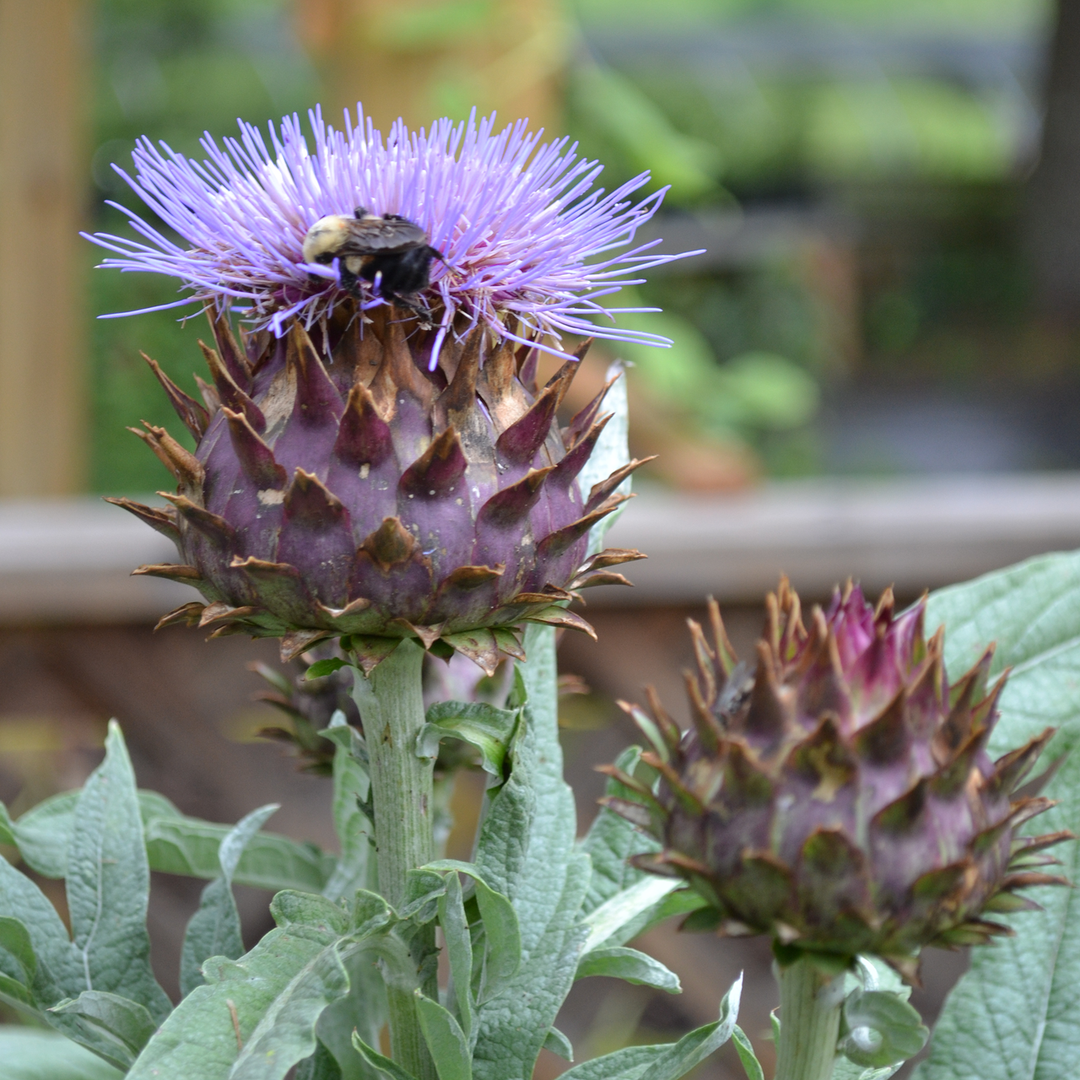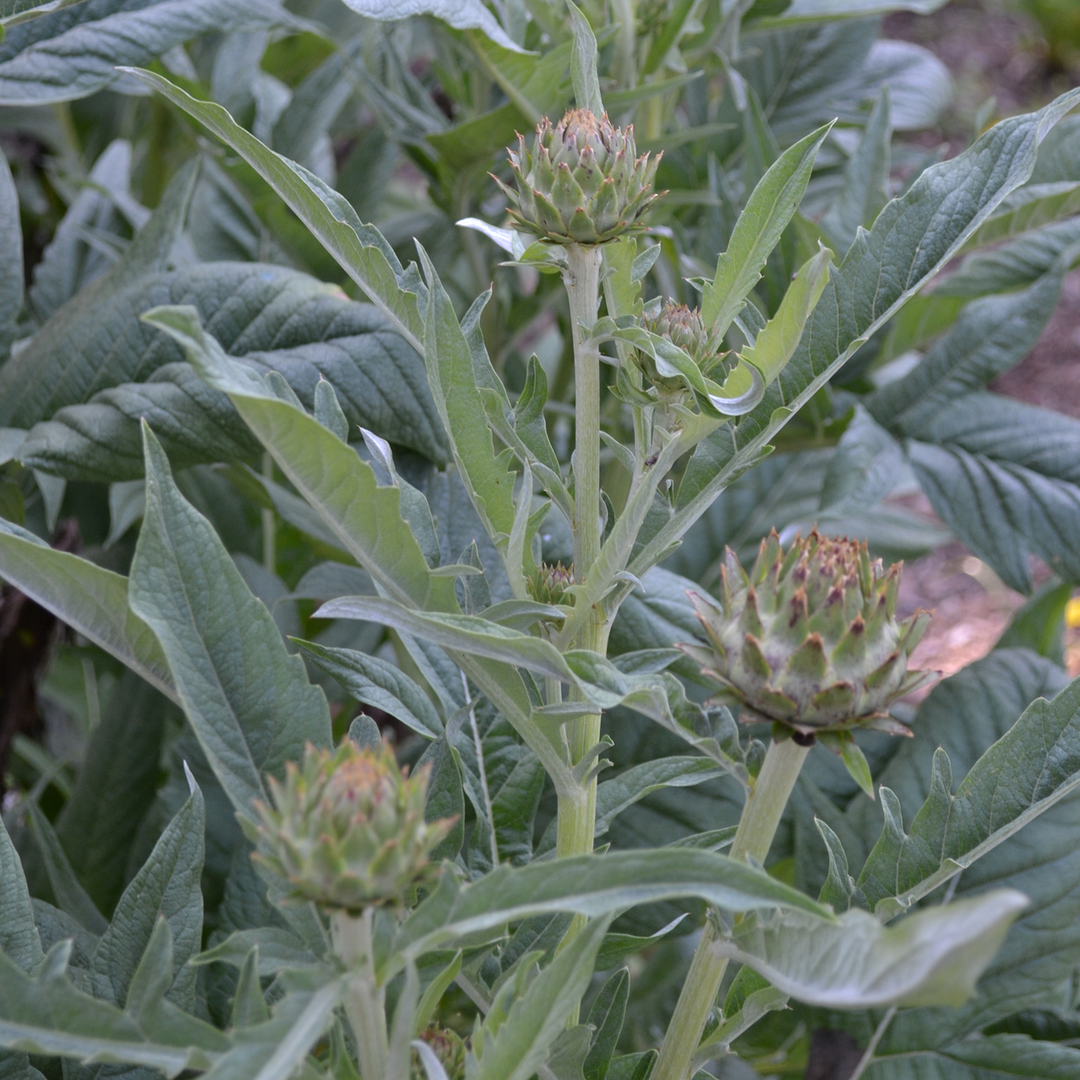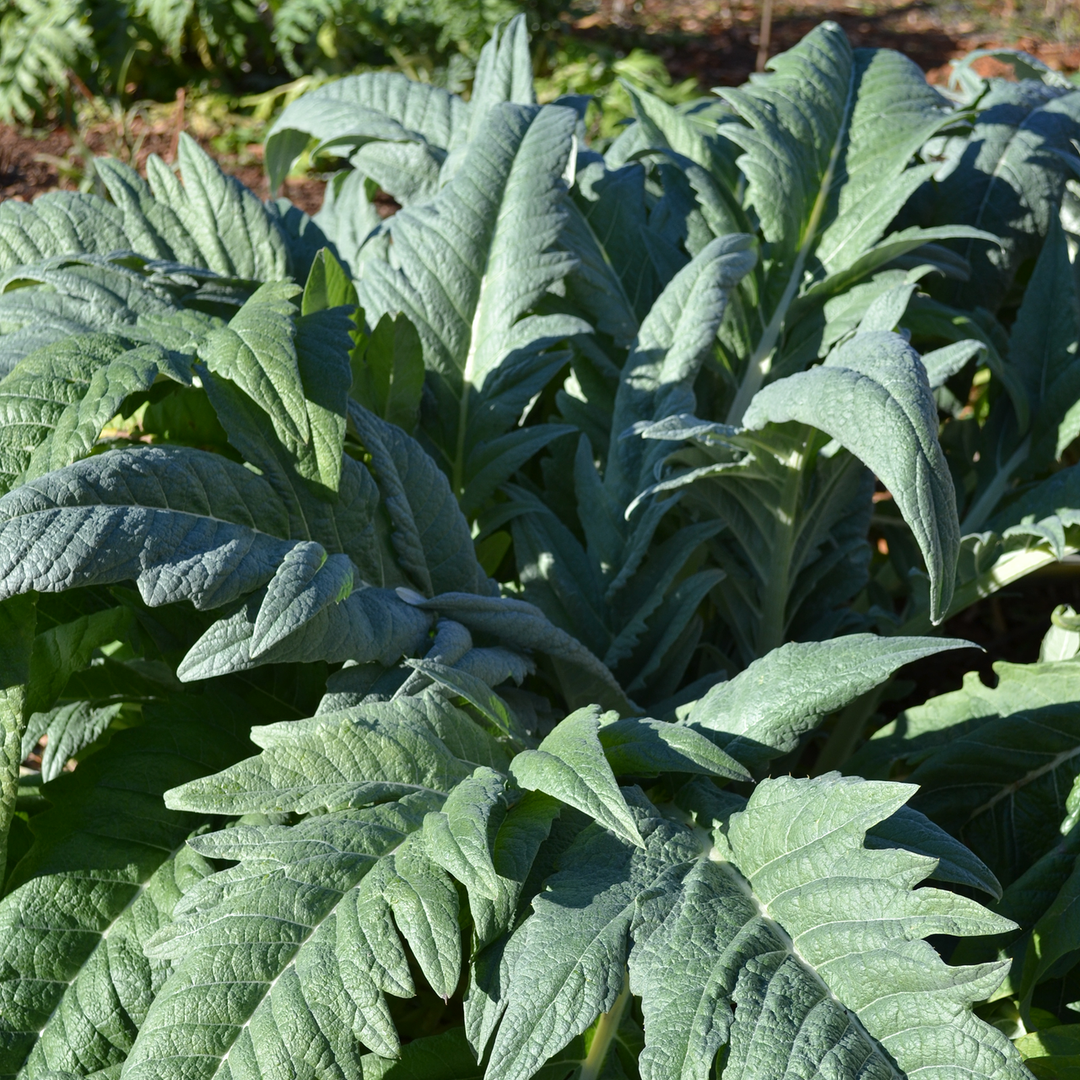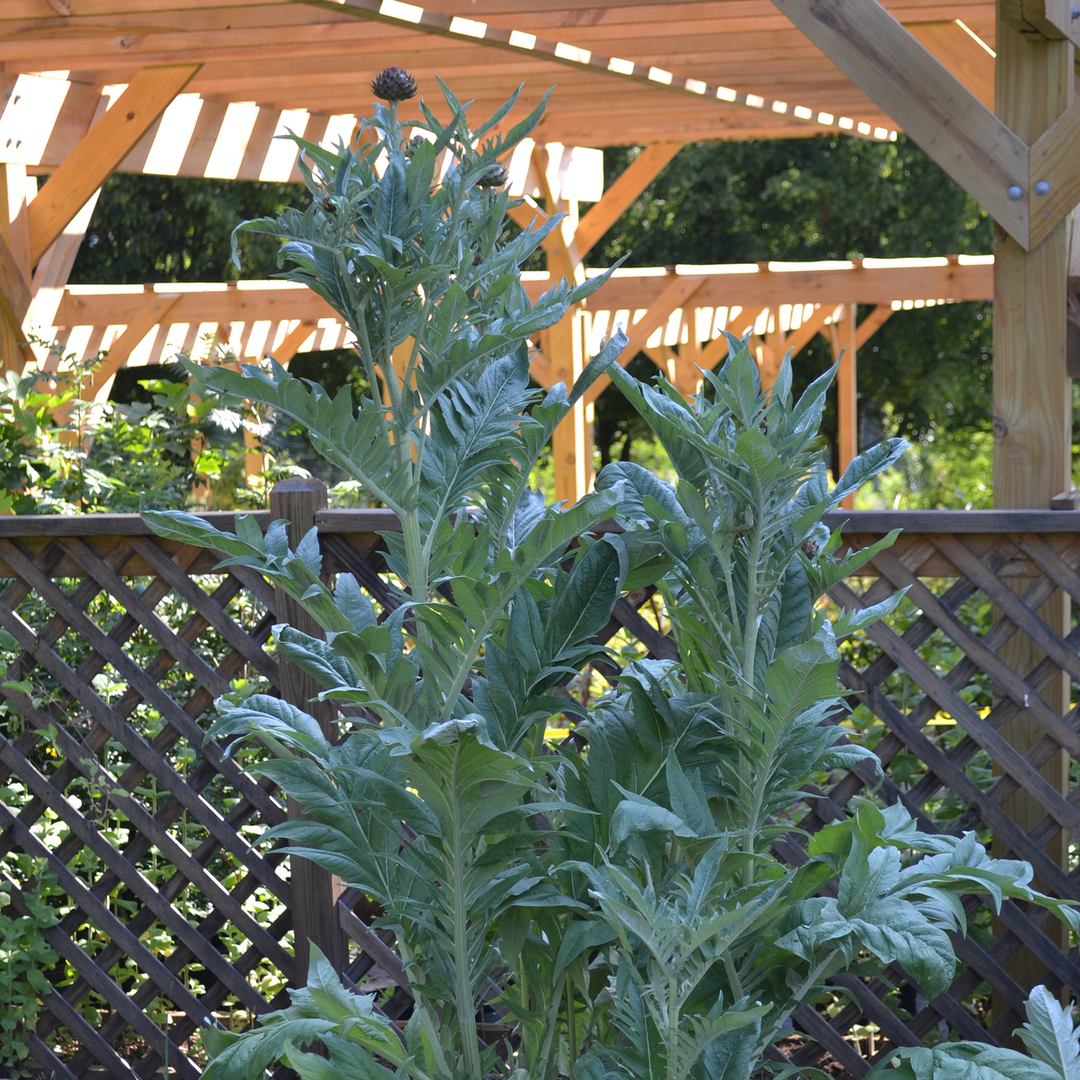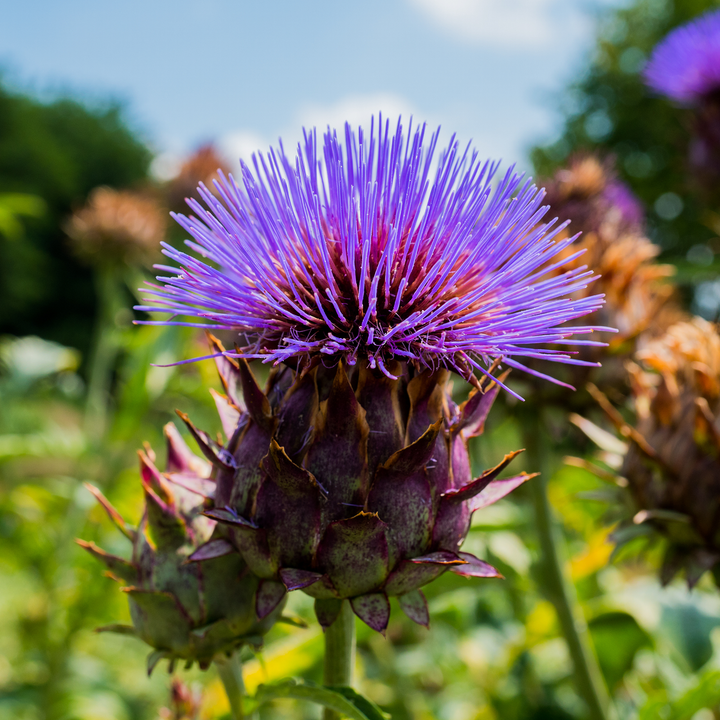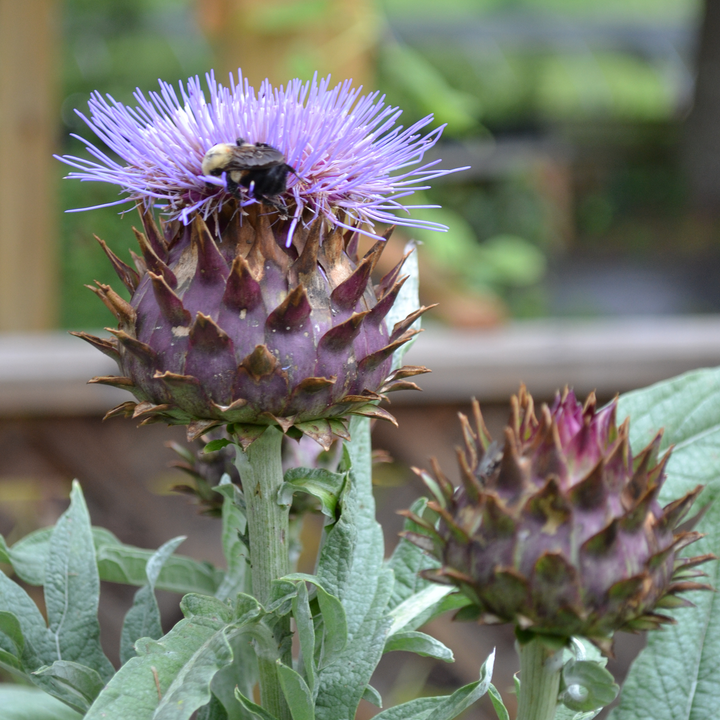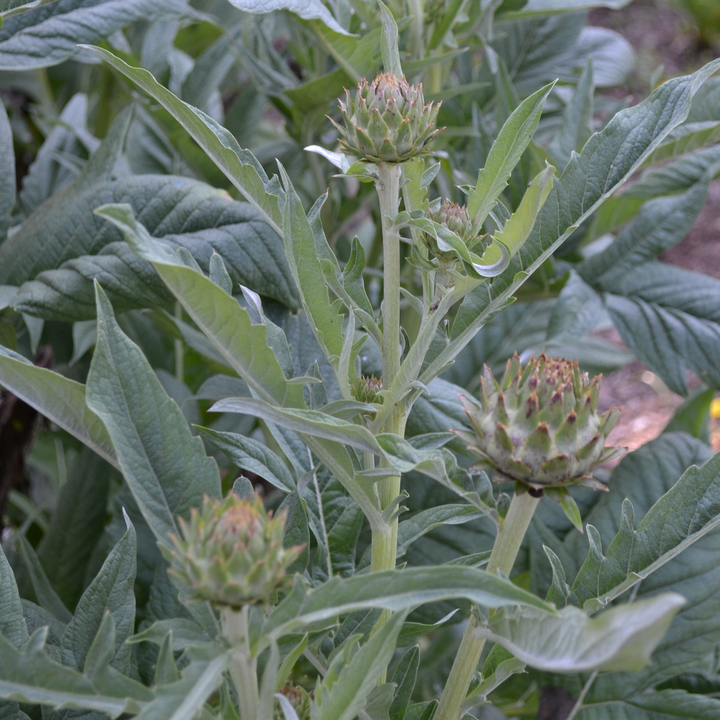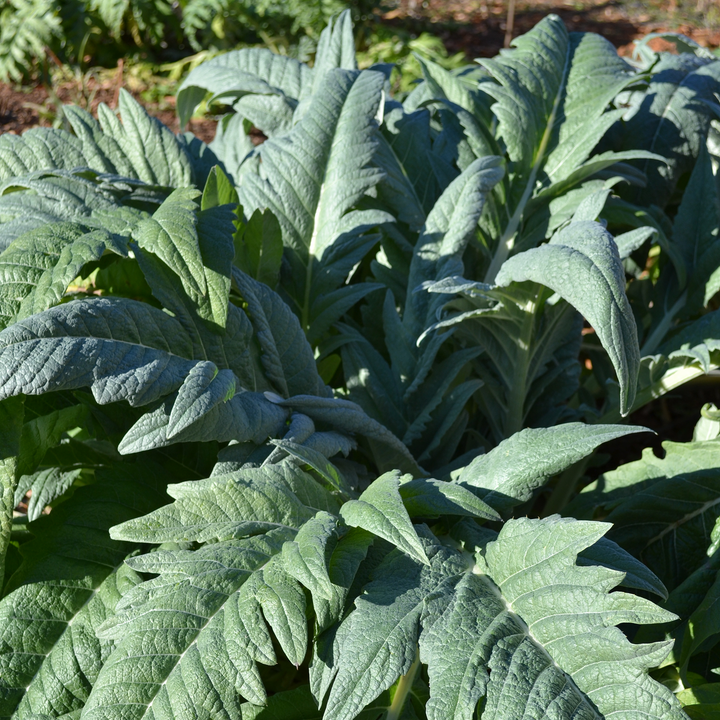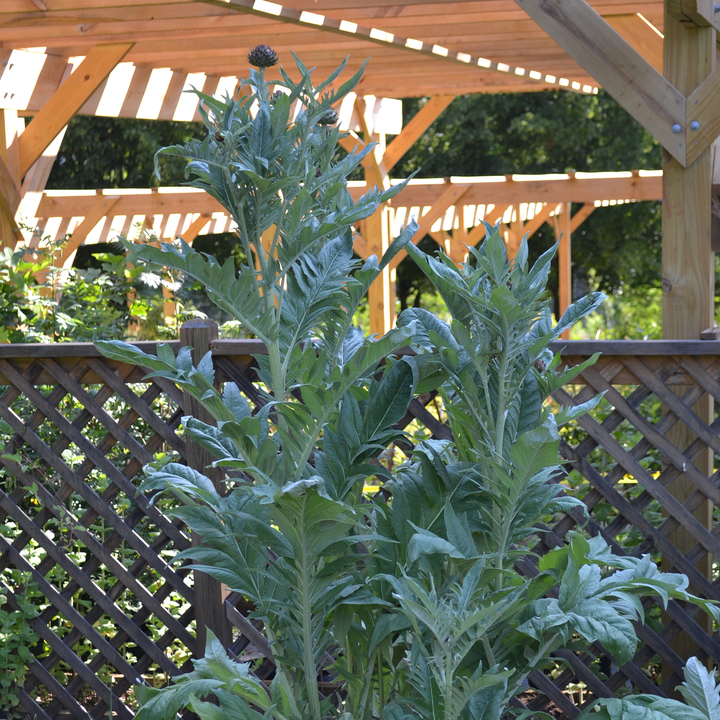Perennial vegetable or ornamental plant
Description: Spiny, gray-green foliage forms a large mound from which the tall flower stalks arise; the inedible, purple, thistle-like flowers in summer are smaller than those of its relative, the Globe Artichoke
Habit: Grows 3 to 6 feet high and up to 4 feet wide
Culture: Prefers full sun and rich, well-prepared soil with even moisture; drought tolerant once established
Hardiness: Cold hardy to USDA Zone 7
Origin: Southern Europe
Attributes: Edible, Drought tolerant, Attracts bees and butterflies
Native to southern Europe, the Cardoon was grown as a vegetable by the Greeks and Romans, and was brought to America by the Quakers in the 1790s. American nurseryman Bernard McMahon wrote in 1806 that the Cardoon "has been a long time used for culinary purposes, such as for sallads, soups, stewing, &c." Although related to the Globe Artichoke - which Thomas Jefferson grew throughout his life - the edible parts of the Cardoon are the inner leaf stalks, which need to be blanched before they are ready for consumption. In the fall, tie the leaves together in a bundle and mound soil up around the base of the plant. After harvesting, the leaf stalks also must be blanched twice in boiling water. The flowers attract bees and butterflies and can be used in dried arrangements.
Cardoon (Cynara cardunculus) is considered an invasive plant in the following state: CA.
Arrives in a 3.5" pot.
Details
| Genus | Cynara |
|---|---|
| Species | cardunculus |
